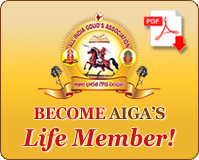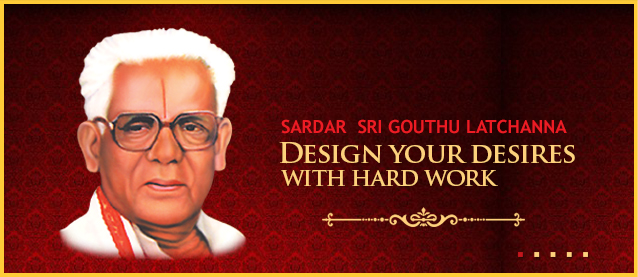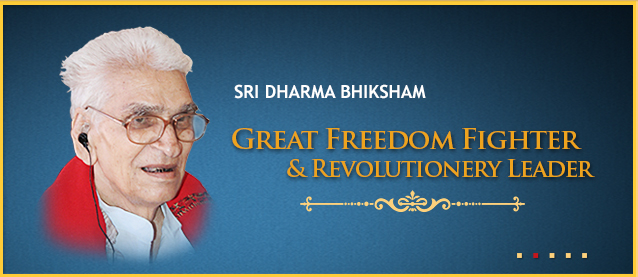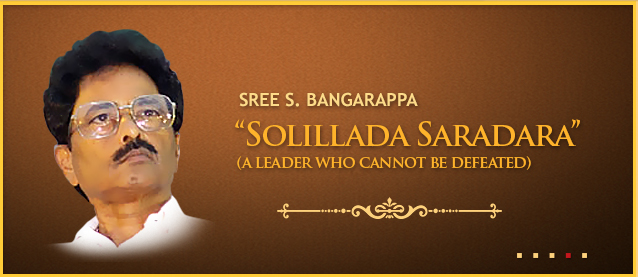Gouds History,
- Gouds History
- H R Gaviappa
- H. G. Ramulu
- Sarathi
- Vullolla Gangadhar Goud
- V. Srinivas Goud
- Margani Bharat
- Anantha Lakshmi Pilli
- Pilli Subhash Chandra Bose
- Chittabbai Kudupudi
- Kudupudi Prabhakara Rao Profile EX MINISTER
- SRI REDDY SUBRAHMANYAM
- Angara Ramamohan MLC
- MEKA SESHU BABU
- Sri Mallula Lakshmi Narayana
- Peethani Satyanarayana
- T. NANDESHWAR GOUD
- KP Vivekananda
- T. Prakash Goud
- R. Krishnaiah
- Ponnam Prabhakar
- Mukesh Goud
- T. Padma Rao Goud
- Kanakamamidi Swamigoud
- G Rajesham Goud
- BALASANI LAKSHMI NARAYANA MLC
- Vanga Subba Rao
- Tulla Devender Goud
- Evuru seethamma MLA
- Jakkamsetti Venkateswararao
- Nim'mala rāmulu gauḍ
- JOGI RAMESH
- KAGITHA VENKATA RAO
- Why for 5 Castes
- Bombay Andhra Settibalija Samjam
- Settibalija, Dommeti Venkatreddi biography
- Pran (actor)
- Suman (actor)
- Mada Venkateswara Rao
- Chalam VENKATA KADALI
- Relangi Narasimha Rao
- P. Adinarayana Rao
- Relangi (actor)
- Dr. Mallikarjun Goud MP
The Goud (Telugu: గౌడ్) are one of the largest castes in All over India, Karnataka, Orissa and Maharastra comprising more than 17% of population of AP. Gouds were involved in Soma and Ayurvedic Medicine development in ancient days. They are historically classified as Somavansh Kshatriyas[citation needed]. At present, they are involved in Palm wine/Toddy tapping (5 %) and liquor business, farming (50 %) and modern professions( 45 %). It is one of the progressive communities of Andhra Pradesh & Telengana.
Origin : There are several inconclusive theories regarding the origin of word "Goud" as it is originated from title Gouda which is distinct from Gowda or Gounder. Several historians and legends also say these people have come from Srilanka, West Bengal, Madhya Pradesh or Northern India. According to the Goud Puran, they are said to have come from Benares and other parts of Northern India, where they were originally engaged in the manufacture and sale of spirituous liquors. Till 18th Century AD to 19th Century AD
The below mentioned six endogamous groups under Goundala are currently using Goud as the title whose ancestral profession was or is toddy and/or liquor vending. Goundala groups were using titles till 18th Century AD as Gouda, Ayya or Appa according to Syed Siraj ul Hassan in The Castes and Tribes of H.E.H. the Nizam's Dominions. The word Goud might have originated directly from then title Gouda itself as Gouda in Telugu means "Person of Goud caste", Goud might have meant the person whose profession is either liquor or toddy. Gouda also means head of village, community or family. It also means people belonging to Goud caste in Telugu language. Gowda pronounced exactly with same accent is used as title by different kuruba, Vokkaliga and Lingayat communities in Karnataka. Gouda and Gowda are a very different communities and the similar sound is coincidental. Goud or Gouda though with a similar sound is a very different community which is represented in karnataka by idigas Some districts of Kannada speaking current Karnataka, some districts of Marathi speaking current Maharastra and Telugu speaking Telangana, Rayalseema and Andhra regions of current Andhra Pradesh were ruled by Quli Qutub Shah (1518-1687), Mughals (1687-1707), and Nizams (1707-1948), as Hyderabad before annexing it into Indian union of states. There could be nearby relation in inception of Gouda and Gowda titles as head under then Hyderabad state
Vokkaliga Gowda community gets its name from Gavunda of Gangavadi whose caste name became synonymous with village chieftainship. The vokkaliga Gowda community mostly found in Southern karnataka that has not been part of Hyderabad state but of the Mysore State. are related to the Gounder community of Kongunadu. However, many other groups such as the Lingayats and Kurubas of Karnataka may have adopted the Gowda title of Gounders or the Gouda title of Hyderabad. But there is no known relationship of Vokkaligas of Gangavadi and the Gouds of Andhra. The idiga community of karnataka is a different caste group that is related to Gouds of Andhra.
Gouda is also used as community head in particular villages to manage specific community related festivals and resolve community related disputes. That tradition of representing particular notable community family is carried forward by their next generation too. Head of that specific family used to be referred to as Gouda. If the same family as more than two sons, elder used to named as Pedda (in Telugu) Gouda and younger as Chinna Gouda. Some of the common names like Pedda Mallayya Goud and China Mallayya Goud or Pedda Laxman Goud and Chinna Laxman Goud implies and supports that.
Ayya title stands for father, elder or head in Telugu language. Ayya is also written as Aiah in Telugu. There are lot of gouds who use these titles in names itself like Balayya Goud, Shankaraiah Goud and Desineni Chinna Mallaya Goud. Appa title stands for father , elder or head in kannada language. This might have come into community of Gouds as certain districts of Telugu and kannada were under nizam ruled Hyderabad state.
Instead of using three(Ayya, Appa, Gouda) different titles for same profession based community, community might have preferred using Gouda and Goud for unification and to distinguish themselves from Kannada speaking Gowda after Hyderabad state is annexed into Union of India and 1st States Reorganisation Commission recommended for merger of kannada speaking districts into Karnataka and marathi speaking districts into Maharastra
The caste had organizational internal structure with subsects for tapping , procurement, marketing and sales. It also provided employment for other castes and over period might have absorbed other castes as they were attached to the common profession under the pressure of the demand for intoxicating drinks. This view bears support from the internal structure of the caste, which shows that it comprises several independent groups. Internal Structure.---- The caste is divided into six endogamous groups.(1) Deva Goundala, (2) Shetti Goundala, (3) Mashti Goundala, (4) Goundala, (5) Idiga, and (6) Laguwad. The above names are only historical. The different names are not known at least after the 18th century as all whose ancestral profession is directly or indirectly attached to toddy are using the single title Goud. All toddy tappers whose yield cannot be sold to depots are being sold locally irrespective of subsects Deva Goundala
It is believed that they are dweep goundala. Dweep means an island, possibly pointing towards Srilanka to indicate people relying on drawing and sale of toddy might have spread wherever there are palmira trees from srilanka covering kerala as ezhavas and tamilnadu as nadars.
Deva means God in Telugu.However the members of this sub-sect claim and is traditionally ascribed to the fact that the members of the other sub-caste in internal structure supplied toddy and arrack/liquor to Deva Goundla for sale of toddy through depots or compounds in cities and towns. They held the highest rank among the Goundala castes and they were excise contractors in modern era. They held the larger domains of toddy palms[disambiguation needed] trees covering several villages spanning districts. They usually hire other subsects of their own internal structure to carry out tasks of tapping, procurement and transportation to depots in major towns and cities. The Shetti, or Chetti Goundala
They are numerous and also enjoy highest or slightly lesser rank along with Deva Goundalas. They assert that the distinctive title Shetti was conferred upon their ancestor by Raja Prataparudra of Warangal, for successfully meeting and overcoming an invincible gymnast in a wrestling match. Later many became good gymnasts, participated in wrestling matches and were also recruited into army.
Over the period, as the demand for liquor and toddy increased, new subsect to market and sale of toddy is done using Shetti or Chetti Goundala. Shetti also stands for one who does trading. Mashti Goundala
Mashti Goundala occupy the lowest position among the Goundala sub-castes. They have five sub-divisions: (1) Tella Idiga, (2) Kulla Jain, (3) Kada, (4) Ayanotiwaru and (5) Jetti. The members of these sub-castes don’t inter-marry. These subsects were used to sell the bye products of toddy and palmyra trees and were also consumers of toddy and liquor. Mashti in Telugu means Enjoy by consuming toddy and eating non-vegetarian snacks at depots along with their sales without having to climb the trees for making incisions nor to transport the toddy.
Tella Idiga subsect These subsects were used to sap Date Palms tree and sell the toddy and neera locally at the place of tapping, on roads , near their homes itself. Over the period, all the toddy tappers who can't find sale of the toddy yield to the depots preferred selling locally. Kulla Jain, Kada, Ayanotiwaru, Jetti were used to market and sale of edible jelly seeds of palmyra palm known as Thati Munjalu in Telugu and ice-apple in English, date fruits, Thegalu or Gaygulu and vegeterian and non-vegeterians snacks at liquor and toddy depots in metros and rural places.
** Goundala This sect concentrated more on toddy palms[disambiguation needed] toddy and liquor in particular villages. Their domain spanned specific village and hiring local caste people in tapping, procuring and sale in specific village.
** Idigas The word 'Idiga' comes from 'Ita' which means a Shendi tree, and who make incisions on the tree for its sap are called 'Ita Godlu' , the two words ultimately passing into the term 'Idiga'. The words Dweep Goundala and Idiga is believed to derived from old Dravidian word ida or ila means island. They are known as Deevaramakkalu (in Kannada) which also might have been derived from Dweep which means an island, possibly pointing towards Srilanka. Idulu , pronounced as Idhulu or Eedhulu in Telugu is a term used by tappers to represent a domain of palmyra trees. The person who goes to idhulu to make incision of palm trees and collect toddy is called as Idiga. Goddess Idamma pronounced as Idhamma is considered as protector of Idulu. Toddy is drawn from two different types of palmyra trees like toddy palms and date palms. Thaati Chettu or Thaadi Chettu in Telugu means toddy palms[disambiguation needed] while ithachettu in Telugu means Date Palms. There were separate tappers who climb long toddy palms using a fibre or tube cable round the tree trunk and body and short Date Palms trees which can be climbed using ladder, cable or with no external support. The Idigas have a sub-division in climbing the type of tree called 'Thala Idiga,' or the word 'Thala' signifying 'the head.'. Thaadi Chettu is singular. Thaallu or Thaalla is plural too in Telugu. The sept that draws toddy from Thaadi Chettu trees may also be called as Thala Idiga. As the Idiga people moved into modern professions or education, other castes like Mutrasi, Munnur, and Telaga castes were recruited to climb the toddy palms and make incisions to draw the toddy. However community people will not inter-marry Mutrasi, Munnur, and Telaga castes and they are currently mentioned as part of other caste. Laguwad or Lagullawandlu Lagu in Telugu stands for knicker or short trouser. The people who used to wear knickers were called Laguwad. This subsect used to fill bottles with toddy at depots, transport toddy from rural areas into metro depots owned by Deva Goundla by lorries, bullock carts or horse driven carts . Over the period, as the people of caste economic status changed, people from other castes were also recruited to do the jobs.
**** From 20th Century AD Goud is the title used by communities whose ancestral profession was/is toddy and liquor vending. In some regions of telangana and andhra, Goundala over the period is pronounced as Goundla, Gounla, Gamla, Gamalla, Gamandlas ultimately to be unified with single title Goud along with all previous exogamous groups before 18th century namely Deva Goundala, Masthi Goundala, Goundala, Shetti Goundala, Idiga and Laguwad including Idiga which were further referred differently as Settibalija, Idiga Balija, Dandu Idiga and Palli Idiga in different census reports like Madras Census Report 1901 and North Arcot Manual
The following castes are considered as Goud community under AP BC act Under BC-B , Section 4. S.No. Caste Name S.No. Caste Name S.No. Caste Name S.No. Caste Name S.No. Caste Name S.No. Caste Name 1 Goud 2 Gowd 3 Gouda 4 Gowda 5 Goundla 6 Gamalla 7 Ediga 8 Idiga 9 Segidi 10 Sri Sayanas 11 Yatha 12 Settibalija * Goud, Gowd , Goundla or Gouda in Telangana region of Andhra Pradesh. * Edigas or Goud or Goudu or Gowdu in Rayalaseema region. Asilies in Cuddapah. * Sri Sayanas, Gamallas, Gamandlas in Vishakapatanam, Vizayanagaram, and Srikakulam. * Gowda, Goud, Settibalija(Balija Idiga),Gamallas, Gamandlas in Andhra. * Goud and Idiga in Karnataka. * Goud in Maharashtra and Orissa. There are similar communities in different parts of India who were and are involved in same trade and profession either before or currently like Edigas of Karnataka, Bhandari of Maharastra, Ezhava in Kerala, Nadars of Tamil Nadu, Gouds of Andhra Pradesh are of the same lineage based on ancestral toddy and liquor profession. As Nizam ruled then Hyderabad state was broken to merge some districts into then Mysore state and then Bombay state, community people were also found in current Maharastra and Karnataka.
*** Eastern Chalukyas Origin Gouds consider themselves as Somavansh Kshatriyas ruling class Eastern Chalukyas, who ruled the present day Andhra Pradesh with Vengi as the capital. The Eastern Chalukyas ruled Andhra region from '7th century AD to 1189 AD. They had their capital originally at Vengi near Nidadavole of the West Godavari district and later changed to Rajamahendravaram (Rajamundry). Chalukya kings constructed many temples in Godavari districts of Andhra Pradesh namely Someshwara and Bimeshwar temples. Chalukya Bhima-I has constructed Bimeshwar temples in West Godavari at Bhimavaram and in East Godavari at Draksharama and Samalkota. Chalukya kings constructed Someshwara temples in West Godavari at Nidadavole, Juttiga of Tanuku, Eluru and Bhimavaram. This shows their liking towards soma, an intoxicating drink which Gouds consider as their ancestral invention as profession. During this period Gouds prospered around this region. They constitute the single largest community in Godavari districts.
*** West Bengal Orgin "Gouda" was once a former state in India. That was merged with another state called Banga in order to form the modern state of West Bengal after Indian independence in 1947. Goud or Gouda people might have migrated from West Bengal with invasions from Guptas, Pala, Sena, Turks and Mughals pushing them further towards south India. It is recorded that Gouda people were ravaged and forced to move with Gupta invasion of Gouda Kingdom forcing Gouda people towards southern part of West Bengal and over period towards Andhra Pradesh and Karnataka spreading across Orissa as mentioned in Brihatsamhita. Sasanka(630 – 637AD) is the first known king of Bengal who extended his territories till Chilka lake of Orissa and integrated the Gauda Empire and established his capital at Karnasuvarna defeating Guptas till his death. The invasion of Gouda Empire again by Harshavardhana of northern India might have forced Gouda people further towards southern India.
Current Malda district of West Bengal, a gateway of North Bengal , was once the capital of Gour-Banga. It had the city named Gourpura is identified as the city of Gouda. Gouda may also imply as the people belonging to Gouda city.Goud might have originated from Gour city existing from 5th Century BC itself.
The Pala Dynasty in West Bengal was ruled by Lakshman Sen Goud was known as akshmanabati. The Sen kings ruled Bengal till Bakhtiyar Khalji conquered Bengal in 1204 AD. With Khalji invasion, the people might have migrated towards south into Andhra Pradesh via Orissa as there are communities in orissa with caste name Goud.
Ruknuddin Barbak Shah ruled a province named Gouda in West Bengal. Husai Shah was the sultan of Goud in 15th century in West Bengal. Once Muslims invaded, the rulers of Goud or Gouda province might have migrated towards south into Andhra Pradesh and Karnataka via Orissa Mythological origins
* According to Gowd legend, they originated from the Great Sage Kaundinya, who they believe originally invented toddy tapping. They believe that many kings came from their community including the Chalukya, and the Satavahana kings. The community is derived branch of somavamsha kshatriyas( Haihaya kshatriyas) who lived at the time of Parashurama. They pray the deity Renuka who is a kshatriya and mother of parashurama. At those times, the community needed a kshatriya type warrior position to spread soma to the people.
* Alcohol, Madhu or Nectar is first given to Demi Gods by Lord Vishnu in Mohini Avatar along with Kalpavriksha (present day coconut tree or palm tree). These trees may be 60 million years old. The timing also coincides with the timing of kurma avatar. Lord Vishnu is also called as Madhu or Madhusudhan. In the initial days, Gouds got patronized by Amrutham and started distilling different types of liquor. They used to serve liquor to the people to relieve them from different types of diseases and pains. They invented lot of ayurvedic medicines to sabotage different types of illnesses. They tried most of the trees and fruits to get different types of wines. Finally they invented toddy (only having 1 to 5 % alcohol) which is considered to be the best food as well as medicine, even today. Toddy is drunk mostly in the rural parts which is relatively low in price( of about ¼ the cost of Beer of same alcoholic content). Toddy is available only during February to May month of every year. The community will live like farmers during the rest of the year.
* The Setti Balija’s and Sri Sayana’s original name was Goud. Their surnames Gudala,Gubbala, Geddada, Gouthu suggests that their original name was Goud - these adaptations first became known in the 18th and 19th centuries[citation needed]. Sri Dommeti Venkat Garu (A Goud), had a chief status and changed the community name to Setti Balija. Sri Dommeti Venkat Garu lived in Bodasakurru village near Kakinada of East Godavari District. The gouds are also called as Delta kings because they occupied the Delta region of Godavari,Krishna and Guntur districts during the Eastern Chalukya Empire.
* Gundaya (950 CE) was the first known historical figure among the Kakatiyas. There are lot of gouds residing around warangal or orugallu.The kakatiyas are belied to be of Racherla gotram kings. During the fall of Kakatiya empire, the musini surname families (Markandeya gotram) who ruled the kakatiya empire for 50 years got settled in Warangal,Nalgonda,Krishna and Godavari districts. There are lot of gouds with musini surname in the above districts. There are lot of villages like musinuri, musinipally, musinivari palem and musigampala. There are lot of other communities with these surnames.
* During Vijayanagara Empire, the Gouds and Nadars were having dominant position in the society because of their huge population (Single largest community of South India) and the society dependency on toddy (a beverage which was called as mandhu (medicine). The rayana(surname is common in gouds residing in Ananthapur, Kurnool, Prakasham, Guntur, Krishna, and Godavari districts) families got settled during the fall of Vijayanagara empire. All the trading castes were having equal respect to the farming communities,as the income from farming was just below the income from different trades. Earlier to this empire from Neolithic Revolution, farming was a low profit self employment work by all communities including Tribals.
* By the end of 18th century the British East India Company had consolidated their rule in Andhra. They brought modern cultivation methods with good transportation of materials. The cultivation become more profitable. The rich gouds entered into cultivation where as the Poor gouds stick to various low income professions and they become further poor. The British also suppressed the gouds as the British wanted their products to be more used by the Indians.
* Gouds use the name "Prasad" to represent their affinity for cultivating coconut fields and banana fields. The following surnames suggest that gouds mostly depend on tree products like Talla, thati (palm tree), nara, narikel, naragani (coconut), chintal, chintalapati (tamarind), mamidla, mamidisetti (Mango), panasa, arati (banana). Some surnames like annam (Rice) and cheruku (sugarcane) suggest their current day cultivation.
Religion They are divided into Tirmanidharis and Vibhutidharis, or the worshippers of Shiva and Vishnu as part of Hindu religion , under the guidance of their respective sectarian priests like Shri Vaishnava and Aradhi Brahmans. Preference is, however, given to the worship of Shiva, whom they adore under the names of Surabhandeshwar, Someshwar, Mallanna or Katamayya, or "the god Shiva who heads Soma." The goddess Somalamma who is considered to be the avatar of Kali, is prayed by Hindus. There are lot of villages that were come up with the goddess Somalamma. They celebrate the Bonalu festival of Yellamma and Katamayya Panduga(Gouda’s festival) in Shravan Masam of every year in Telangana. They also worship Yellamma and Katamayya as the protector of palmyra trees for more yield. They worship all the deities but varies with respect to the regions like telangana, rayalseema and andhra. Gouds are non-vegeterians. They also worship goddesses like Kali, Maisamma, Durgamma, Marri Amma, Mutyalamma, Idamma, Pochamma, Nalla Pochamma, and Darbar Maisamma. They sacrifice fowls, sheeps, and goats mainly for more yield of the profession including toddy and agriculture, wish fulfilments, for get togeather of relatives and protect from epidemic diseases like cholera, typhoid etc., before the arrival of science and medicine.
Brahmins serve the caste in religious and ceremonial observances including auspicious days selection and horoscope matches while Jangams(Lingayat Priests) officiate at funeral ceremonies.
Sardar Sarvai Papanna Goud Sardar Sarvayi Papanna Goud also called as Papadu was a Telugu King, who ruled Buvanagiri of Nalgonda, Thatikonda of Warangal, Kolanupaka, Cheriyala, Karimnagar, Huzurabad and Husnabad regions for 30 years. Papanna Goud born in 1650 A.D. Having seen the oppressions and atrocities committed by Mughals, during that time raised a small army out of warrior castes through guerilla attacks on them. He recruited followers from an array of idiga men and ritually warrior groups to form an army of several thousand. With it, he mounted successful assaults against several of the major towns in Telangana which were under Mughals and captured several towns and forts. Demographics * Gouds are found all over Andhra Pradesh in all three regions Telangana, Andhra and Rayalseema. * Gouds are found in Karnataka as some districts of Karnataka were merged from then united Hyderabad state after being annexed into Indian union. Some Gouds might have also migrated as it is a neighbouring state. Gouds are also found in Maharastra as some districts of Maharastra were merged from then united Hyderabad state after being annexed into Indian union. Some Gouds might have also migrated as it is a neighbouring state. * Gouds are found in Orissa as then Northern Circars comprised Coastal Andhra and Orissa districts ruled by Nizams and British.Traditional occupations The Gouds originally prospered around the Godavari River. The Goud community adopted alcoholic beverage production and sale as their trade. This trade is believed to be a gift from God. The people who serve toddy are considered God-like (Somanath, Madhusudhana, and Gandharvas). Gouds also support themselves in farming and warrior profession which is a generalised trade being followed by all communities. From Kshatriyas to Schedule castes are allowed to do cultivation. Warrior position is also given to all communities in different positions. Before the British came every community has a specific trade to do.



































